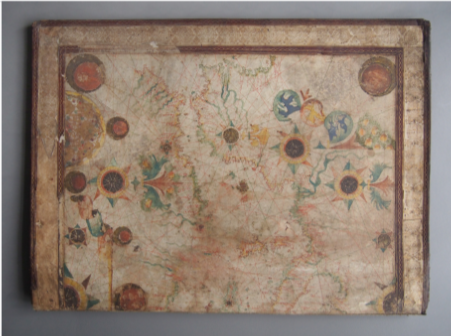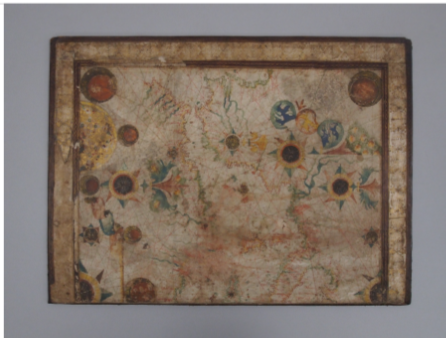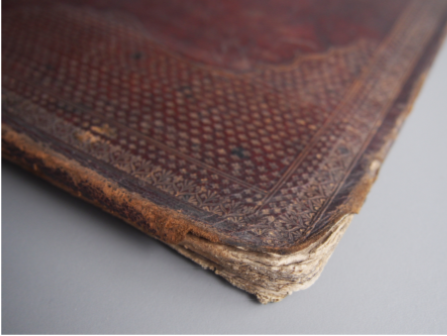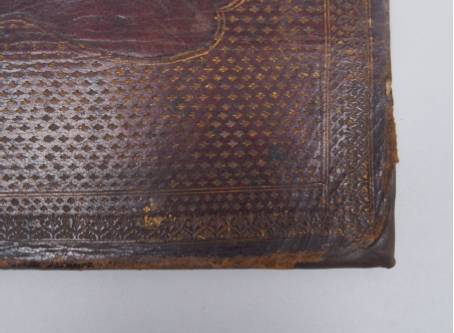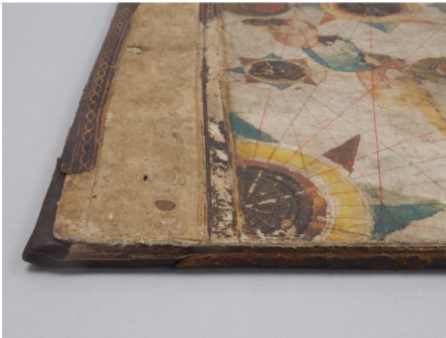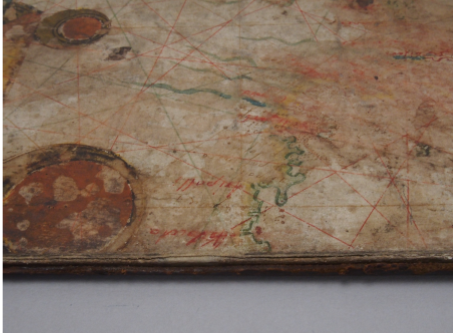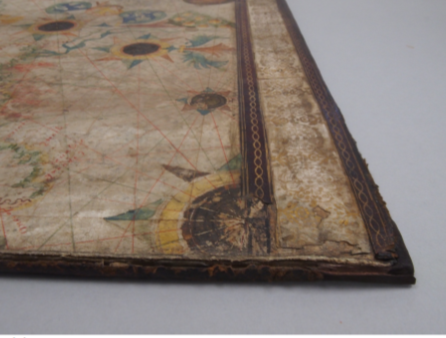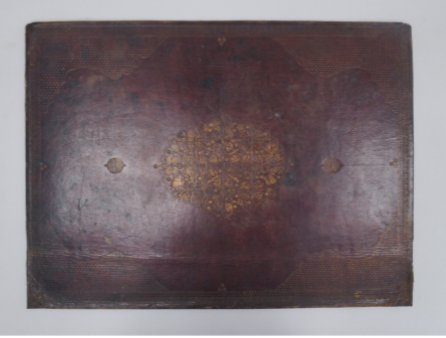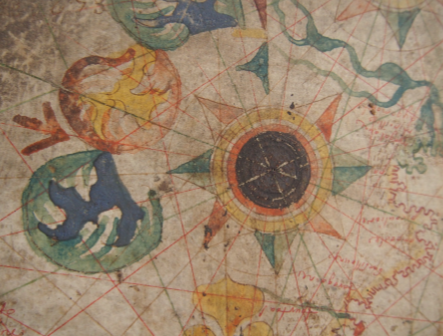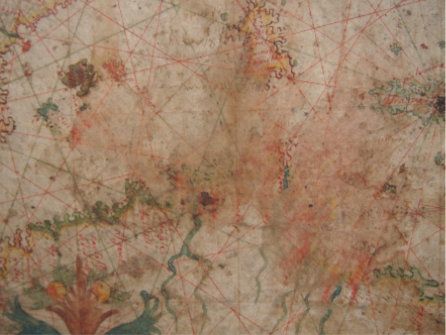
Portolan Chart
Nicola il Board
Vellum, board and leather
1673
LDOSJ 1438
335x429mm
One of the items in our collection is this Portolan Chart from 1673. Portolan charts were intended to be used as maps for sailing from port to port. The item in our collection, however, is a highly decorative example, and was more likely a ‘presentation’ copy than one used at sea. Over the course of its over 300-year life, this chart has gone through various physical changes, and was recently expertly conserved by Abigail Bainbridge thanks to the kind donation made by Nigel Hankin.
What is conservation?
Sometimes objects in the Museum’s collections require conservation, in order to stabilise damage and preserve the object for as long as possible. This involves doing as little as possible to ensure the object is in a safe condition, with all steps taken being reversible. You can find out more about conservation on the Institute of Conservation’s website.
Each time an item of the Museum’s collection is conserved, a detailed report is created so we can record how and when the item was treated, what with, and why. This means that in the future we have knowledge of historic problems the object has experienced, and we can identify more modern repairs and treatments. This information will inform the way we display, store and conserve the item in future.
What were the problems?
This chart is just half of the original piece. Abigail examined the chart in great detail before starting the repairs and noted that this chart was probably pasted onto two boards, and then bound together with a fold in the centre to create a book like spine down the centre back of the piece. This would have held it flat, but also would have created some damage in the centre of the chart. This seems very true, as now the right-hand half is missing completely! When the chart was pasted onto the board, the edges were prepared in such a way that the bindings covered the edges of the chart, holding them in place. When the damage occurred to the spine and the other half was separated, a raw, uncovered edge was left down what used to be the centre of the document. As you can see from the ‘before’ images, over time, the boards, coverings and parchment have started to warp and detach at the raw edge. In addition to this, when the chart was mounted, some areas of the surface of the map were covered with glue and leather that has since worn away and damaged the decorative edges of the chart. Over time, the chart has also acquired some water and insect damage, and areas of thicker pigments and fake gold paint have worn away or become slightly dirty.
What was done?
The first step in conserving this piece was to try to flatten the item back down without damaging it further. This was done by carefully weighing the item down, increasing the weight on the item little by little over the period of a few months. Sometimes this can be achieved by the introduction of humidity to the item, but this could have caused further damage to the pigments used on the chart and isn’t really suitable for use with old parchment. This is why it is extremely important that specially qualified conservators carry out repairs on historic items, as detailed knowledge of materials and methods is required, as well as a great deal of experience.
Once the item was flatter, work could begin on reattaching the layers to better support the actual chart. The boards were re-adhered wherever possible using wheat starch paste, which is a glue that can be made very thin, produces strong bonds and doesn’t degrade over time, so was perfect for sticking the split boards back together.

Instead of re-adhering the parchment of the chart back to the boards (as it was originally), in order to not introduce more moisture to the item, the conservator employed a framing technique using Japanese kozo paper, where strips of the paper are attached using wheat starch paste to a the very edge of the back on the paper, then pulled around and pasted to the board, securing the paper to the board without making it wet or adding any extra tension. The spine edges were then built up using western paper and covered with toned Japanese paper to match the colours, supporting the parchment at the edges. Finally, the paint on the chart which had flaked in places was treated to prevent these areas from flaking more and so preserve the painted surface.
Once the conservation of the item itself was complete, special mountings were made from conservation grade material to keep the item stable inside its storage box, and to keep a very light pressure on the item to maintain the flatness achieved in the conservation process.





